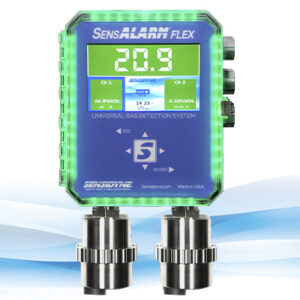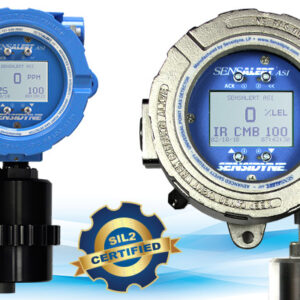The SensCast gas monitoring system is a cutting edge wireless platform providing the complete solution for gas detection signal communication throughout a plant or facility. SensCast is the versatile and easy to use wireless solution for continuous, multi-point gas monitoring.
- Brand
- OVERVIEW
- SYSTEM DIAGRAM
- Download
OVERVIEW
Comprehensive Solution to Meet Application Requirements
All components available for 900 MHz or 2.4 GHz systems
Remote or locally mounted sensors for ideal detector location
Ultra low-powered transmitters have internal power source
Hazardous area and non-classified area models
Can be used for short-term and permanent installations
Safety Reliability without Compromise
Deployable for facility-wide or local monitoring networks
Certified for Division 1 and Division 2 hazardous classified areas
Repeater functions to link wired system from a controller to DCS/PLC
Wireless relays enable control of annunciation and mitigation functions
Dual-sensor models have independent outputs and alarms for each channel
User Friendly and Intuitive
Significantly lowers installation costs from running wiring and conduit
Mobile or computer browser access to the system setup and measurements
Easy, menu-driven setup with confirmed signal notification
Relay activation control including three alarm levels, com, and power
Available survey tool for analyzing signal performance and layout
Intuitive and Cost Effective Solution for Complex Applications
SensCast takes a unique approach to solving communication and connectivity challenges found in many gas detection applications. Beginning with proven toxic and oxygen sensors and robust transmitters, SensCast then provides options for linking and communicating sensor measurements, alarm conditions, and faults to local and facility-wide networks, without traditional expensive hard wiring.
The drawings to the right depict common network installations using SensCast to wirelessly communicate within the gas detection system. Wireless systems can be installed indoors or outside with the transmission distance dependent upon many facility-specific factors. Our SensCast Site Survey Tool (SST) calculates network reach and potential RF interferences ensuring optimal setup of your wireless gas detection network.
SYSTEM DIAGRAM
Drawing 1: SensCast Transmitters transmit wirelessly to the SensCast Receiver. The Receiver sends Transmitter output via wifi or Modbus (wireless or wired). The SensCast Relayer actively “listens” for alarm or fault conditions and activates annunciators or hazard mitigation systems connected to one of 5 relays.
Drawing 2: Two independent networks consisting of a Receiver and 32 SensCast Transmitters (or 16 Dual Head Transmitters) exist in one facility. A Sensidyne wireless-enabled controller (Model 7200 shown) collects all 64 outputs sending them to a DCS or PLC via wireless Modbus. A SensCast Relayer actively “listens” for alarm or fault conditions and activates annunciators or hazard mitigation systems.








